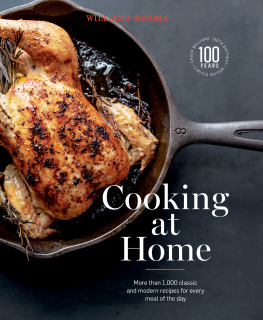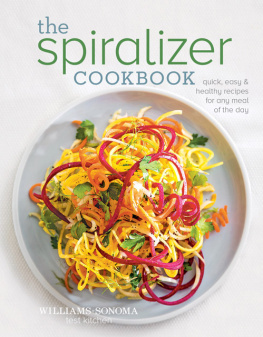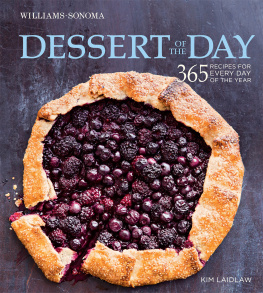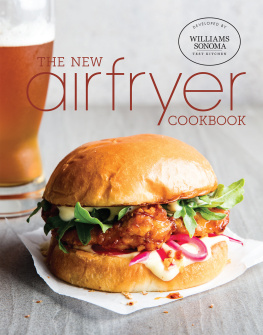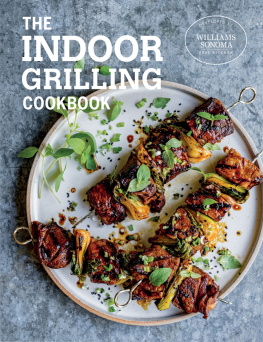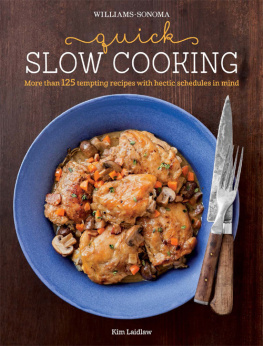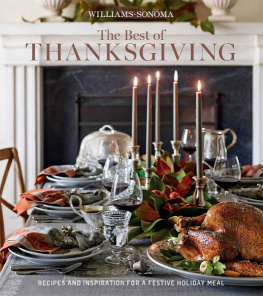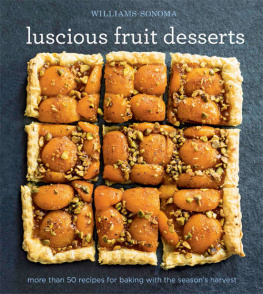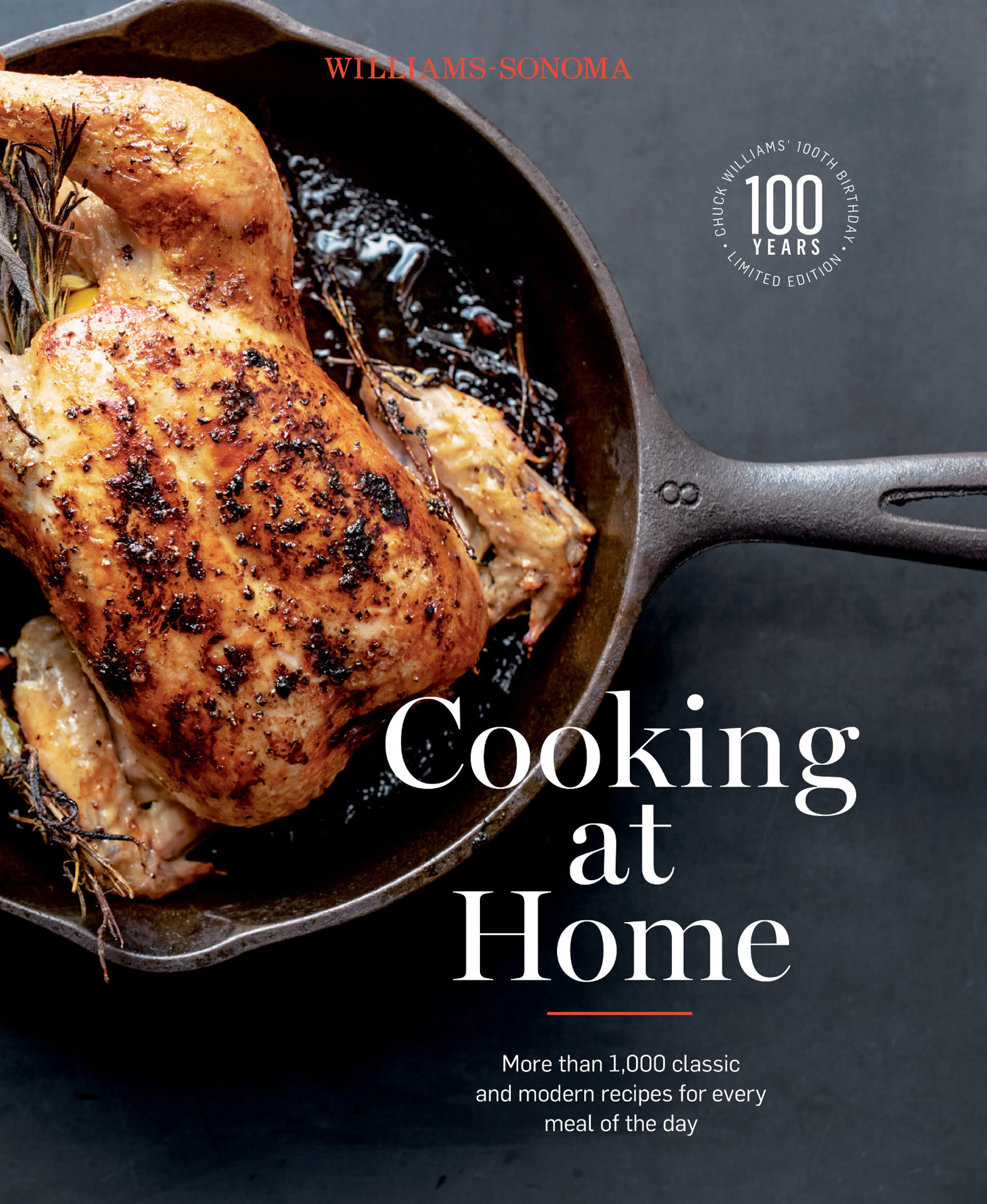
Chuck Williams
Founder and Director Emeritus
Williams-Sonoma
Photographs Con Poulos



The dishes we cook and eat in our own homes, in the company of family and friends, have a unique power to soothe, satisfy, and nurture, to spark good conversation, and to conjure and create memories. Whether home cooking to you means fried chicken with mashed potatoes or a bowl of pasta with meat sauce, a simply grilled piece of fish or a slowly braised beef brisket, these are the kinds of recipes everyone would love to know how to make welland share with others.
When I founded Williams-Sonoma in 1956, having a basic knowledge of home-style cooking was something many people took for granted. Two generations ago, almost everyone who knew how to cook first learned under the patient guidance of a parent or grandparent who passed down family recipes and time-honored techniques like how to simmer and skim a soup or stew; pare fresh vegetables and fruits; stuff and truss a holiday turkey; roast and carve large cuts of meat; or mix and roll out pie dough. Life moved at a slower pace back then, and it seemed as if there was plenty of time to learn everything one needed to know about cooking.
Today, of course, things are much different. Its true that many people may be looking for a quick fix, intrigued by whats posted on a popular food blog or televised on a cooking show. While I occasionally encounter those people, more often I meet customers whose primary goal, despite their busy lives, is to recreate the kind of delicious, satisfying meals they recall from childhood. Women and men alike, many of whom never learned to cook alongside a loved one, have rediscovered a strong desire to cook for their families and friends, whether its a quick weeknight meal or a relaxed weekend dinner party. And even as they are buying good-quality pots and pans, kitchen knives, or bakeware, these same people ask questions like: How do you poach an egg? or Whats the best way to make birthday cake? or Do you know a really great recipe for roast chicken? In these instances, I love to share every bit of knowledge I can. But there is only so much one can do in such casual and brief encounters.
Cooking at Home aims to fill the gap between then and now, offering an abundance of recipes and kitchen wisdom for home-cooked meals of all kinds. From everyday breakfasts and weekend brunches to lunchtime salads and sandwiches; from wholesome dinners you can put together in minutes to lavish slow-cooked roasts and braises; from classic cakes, pies, pastries, and cookies to refreshing frozen desserts, this book brings together more than one thousand of our favorite kitchen-tested recipes.
Before you explore this wonderful collection, be sure to read the introductory pages of the first chapter, which offer a primer on how to outfit a kitchen as well as ideas on how to round out whats missing. There you will also find tips for following a recipe and stocking your kitchen with food staples, fundamental knife skills and cooking techniques, hints on building flavor, and the basics of wine and spirits. Next are recipes for cooking staples such as stocks, flavored oils, bread crumbs, and basic doughsthe building blocks that are called for multiple times throughout the book.
Twenty-two chapters of delectable recipes follow, organized by mealtime (breakfast and brunch); course (appetizers and first courses, dessert basics); featured ingredients (fish and shellfish, poultry, meat, vegetables, fruit desserts); or type of dish (sandwiches and pizzas, cakes and cheesecakes, frozen desserts). Each chapter, in turn, begins with several pages of detailed instructions relevant to the topic and to the recipes that follow, such as fundamental techniques, key ingredients, cooking methods, and reference charts.
As youll discover, the recipes in this book are accompanied by a wealth of informative side notes. These include concise tips that give you an edge in preparing the recipe perfectly; variations that help you adjust the recipe to your own personal taste; interesting facts about the ingredients used therein; or ideas for using the recipe in another preparation. Think of these as the informative nuggets that a friend standing by your side in the kitchen might have offered you long ago.
In short, we have packed a lot of information into these pages to create a complete cooking reference you can use every day, whatever you are in the mood for and whatever the occasion. We hope its a book you will return to and cook from often, and one you will want to share with others, to spread the pleasures of cooking at home.

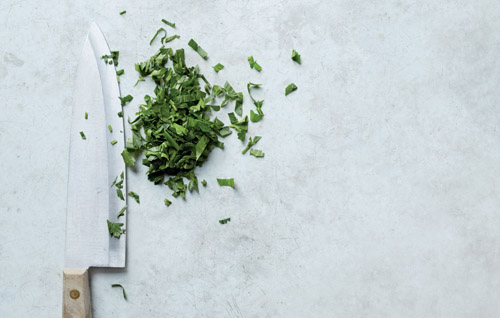
Cooking Basics

CHAPTER 1
Cooking Basics
When preparing meals at home, youll be able to cook the widest range of dishes if you start out well prepared. On the following pages, youll find a wealth of information on everything from how to stock your kitchen with equipment and pantry staples to how to cut and prep basic ingredients, from how to saut, grill, and steam to how to poach, fry, and roast, from how to season dishes to how to pair food and wine.
Outfitting Your Kitchen

Its rare that youll have all the kitchen equipment you needor want. But even if you have a lot of gaps to fill in, dont worry. Experienced cooks know its best to outfit a kitchen as the need arises, following a simple strategy.
BUY THE BEST YOU CAN AFFORD You dont need a matched set of cookware. In fact, different materials are often best for different types of pots, pans, and tools. The only rule is to buy the best equipment you can afford, because good-quality pieces will last longer and will make cooking easier, and your food will turn out better. This is especially true of pans: a good heavy-gauge, thick-bottomed pan will heat evenly and prevent food from burning.
COOKWARE MATERIALS When choosing cookware, youll be faced with many choices of materials. For everyday pots and pans, two good choices are stainless steel and anodized aluminum. Steel heats up more slowly and less evenly than aluminum, but is more sturdy and long lasting and is nonreactive to acidic ingredients. Some steel pans have aluminum cores to help them heat quickly and evenly. Anodized aluminum has been treated to strengthen it and to prevent the aluminum from reacting with acidic foods or eggs.
Copper is the best conductor of heat and an excellent choice for cookware, but requires more maintenance and can be costly. It will also react with acidic foods unless it is lined, usually with tin. Cast iron is used for some pans, and although it reacts mildly with acidic foods, it heats up evenly and holds heat well. Enameled cast-iron cookware is good for long-simmered dishes, and the enamel coating makes the pan nonreactive. Pans with nonstick surfaces are handy for cooking a variety of items that can easily stick, such as omelets, or when you want to reduce the amount of cooking fat in your diet.

